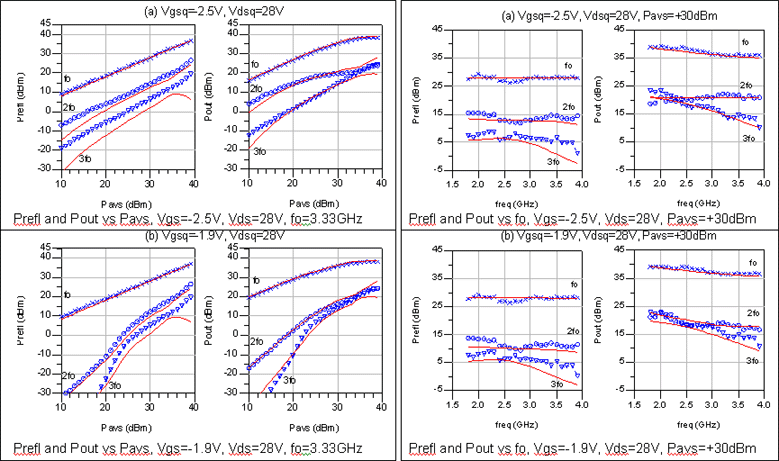Wide bandgap semiconductor devices such as GaN HEMTs and SiC MESFETs have a growing presence in high power microwave electronics applications. Computer aided design of high power microwave circuits gives rise to the need for accurate large-signal models. However, nonidealities such as charge-trapping and thermal self-heating make understanding and modeling these devices a challenge. A methodology to characterize and model the dispersive effects that plague such devices is investigated. Development of a large-signal drain current model predicting the effects of trapping and thermal self-heating is explored for these devices. Complete nonlinear models for GaN HEMTs and SiC MESFETs accurately predicting IV, small-signal and large-signal RF behavior under various quiescent bias and frequency conditions are investigated.
Model Topology and Challenges
The objective is to develop a general-purpose model which accurately predicts dynamic IV characteristics, large-signal RF power and S-parameters under varying thermal and bias conditions.
The most important aspects of these high-power devices is the characterization of self-heating and charge-trapping effects on the device and their effect on drain current performance.
The generalized large-signal model topology shown here and the numerous aspects of which constitute the model are shown.
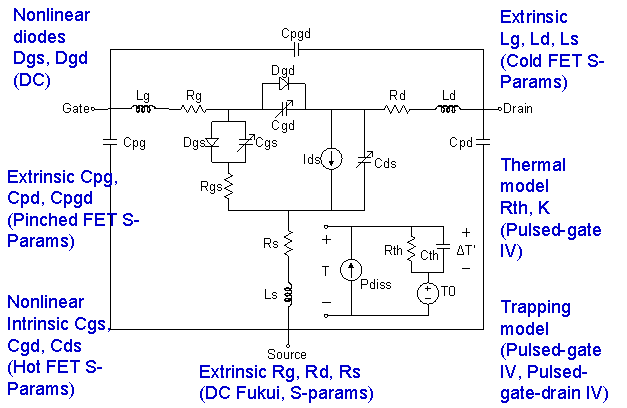
Dynamic IV Techniques
SiC MESFET Nonlinear Drain Current Model
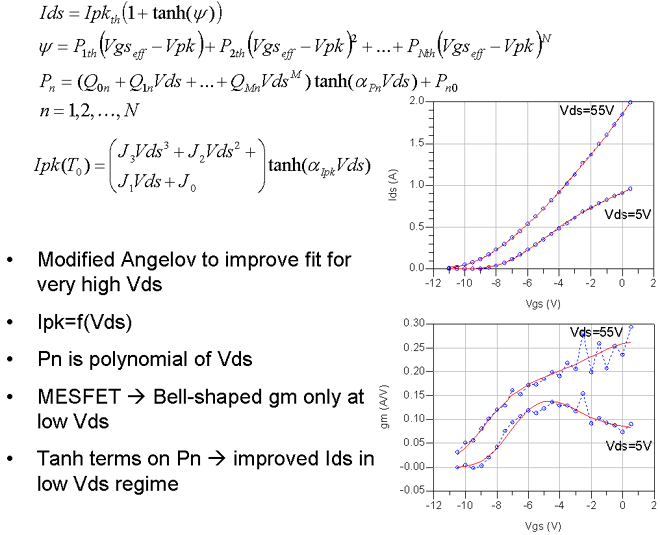
GaN HEMT Nonlinear Drain Current Model
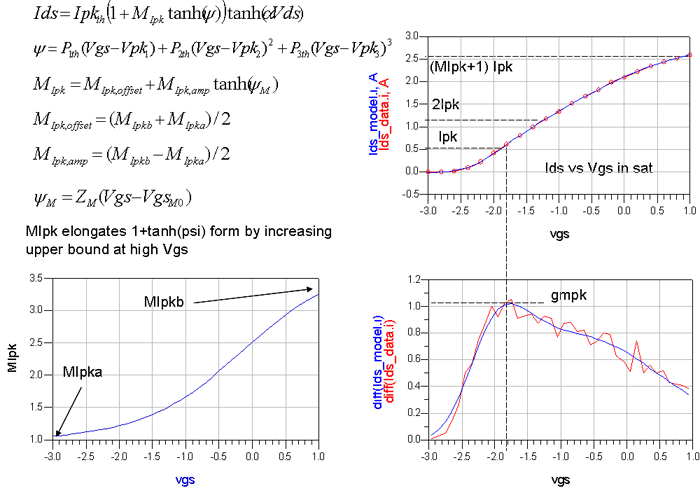
Implementation of Self-Heating and Charge-Trapping into Ids
The two main types of charge-trapping: surface trapping and substrate trapping; are exploited using PIV characteristics at various biases. The charge trapping effects can be addressed and adjusted for using an effected gate-source voltage modifier.

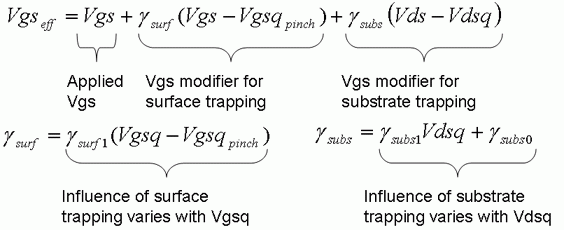
SiC MESFET Pulsed-IV

GaN HEMT Pulsed-IV
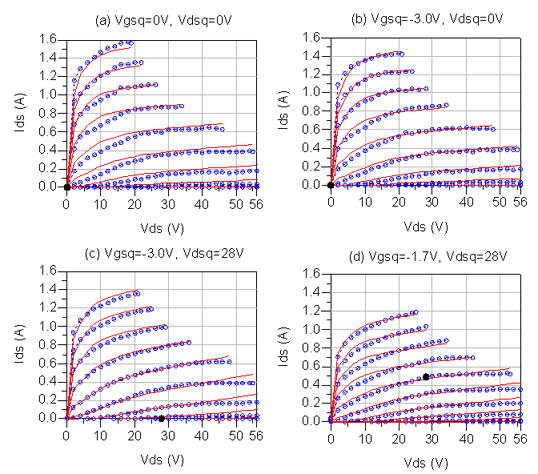
Verification of RF performance of model
The accuracy of the complete large-signal models have been verified under small- and large-signal RF drive for several representative biases and over varying power levels and bandwidths. The performance of the model operating under small-signal conditions is shown first. The model is then compared with large-signal multiharmonic output and input reflected power. Finally, the third order intermodulation distortion predictions of the models is presented.
Small-Signal S-parameters
Accurate predictions of broadband small-signal behavior over various biases can be seen for both device models. This infers that the gm and gds computed from the pulsed-IV-based, Ids formulations are accurate under small-signal drive. Additionally, the parasitic elements have been correctly extracted from multi-bias S-parameter measurements and that the nonlinear Cgs, Cgd and Cds have been properly treated.
SiC MESFET
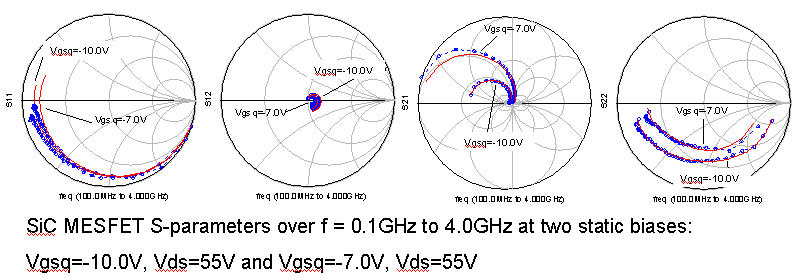
GaN HEMT
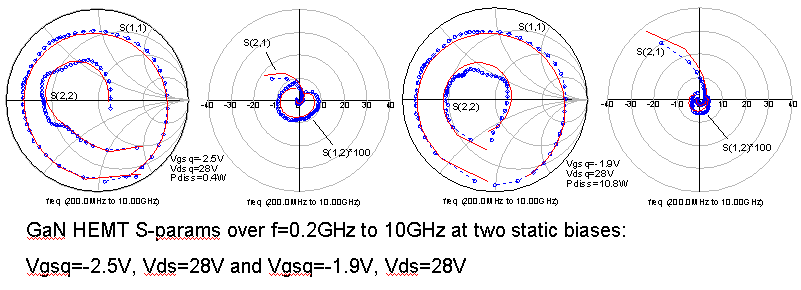
Large-Signal RF Measurement
The large-signal multi-harmonic, broadband single-tone and two-tone measurements comparisons are shown below. These include output power (Pout) and input reflected power (Prefl) for three harmonics. The modeled computations show good agreement with measured data.
SiC MESFET
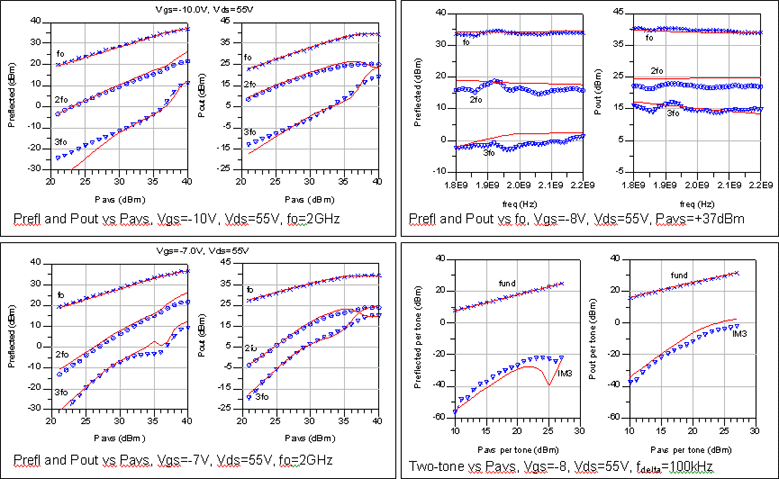
GaN HEMT
